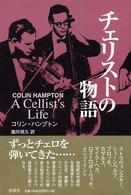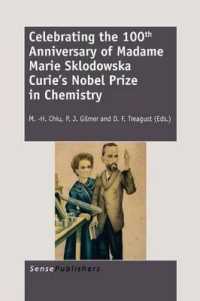- ホーム
- > 洋書
- > 英文書
- > Science / Mathematics
Full Description
With the fast growth ofmultimedia information, content-based video anal- ysis, indexing and representation have attracted increasing attention in re- cent years. Many applications have emerged in these areas such as video- on-demand, distributed multimedia systems, digital video libraries, distance learning/education, entertainment, surveillance and geographical information systems. The need for content-based video indexing and retrieval was also rec- ognized by ISOIMPEG, and a new international standard called "Multimedia Content Description Interface" (or in short, MPEG-7)was initialized in 1998 and finalized in September 2001. In this context, a systematic and thorough review ofexisting approaches as well as the state-of-the-art techniques in video content analysis, indexing and representation areas are investigated and studied in this book. In addition, we will specifically elaborate on a system which analyzes, indexes and abstracts movie contents based on the integration ofmultiple media modalities. Content ofeach part ofthis book is briefly previewed below.
In the first part, we segment a video sequence into a set ofcascaded shots, where a shot consistsofone or more continuouslyrecorded image frames. Both raw and compressedvideo data will beinvestigated. Moreover, consideringthat there are always non-story units in real TV programs such as commercials, a novel commercial break detection/extraction scheme is developed which ex- ploits both audio and visual cues to achieve robust results. Specifically, we first employ visual cues such as the video data statistics, the camera cut fre- quency, and the existenceofdelimiting black frames between commercials and programs, to obtain coarse-level detection results.
Contents
1. Introduction.- 2. Background and Previous Work.- 3. Video Content Pre-Processing.- 4. Content-Based Movie Scene and Event Extraction.- 5. Speaker Identification for Movies.- 6. Scene-Based Movie Summarization.- 7. Event-Based Movie Skimming.- 8. Conclusion and Future Work.- References.








